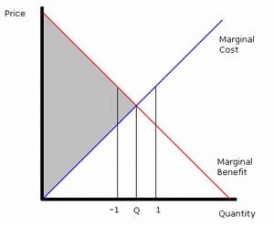On Thursday, the Office of Management and Budget released proposed revisions to “Circular A-4”. It also released a separate preamble, explaining its thinking and asking for comment on certain identified issues. 
Circular A-4 is almost certainly the most important document that most people have never heard of, since it governs how federal agencies conduct cost-benefit analysis of potential federal actions. The proposal is not a massive rewrite of Circular A-4, but it would make a number of important changes. Here are some highlights.
- It would lower the discount rate. There’s some nuance to this, but generally speaking, the most commonly used discount rate will be 1.7%. Given that regulations’ costs are generally incurred early and benefits often accrue over time, the change will significantly improve the benefit/cost ratio for many regulations.
- With respect to federal actions – think climate change regulation – the impacts of which will be felt intergenerationally, the revisions would reemphasize that it is appropriate to use a lower discount rate to evaluate the impacts of such actions. I have to confess that it has always seemed ironic to me that current (and prior) generations got to benefit from the economic activity that caused climate change, and also get to decide how valuable it is to future generations to take actions to fix the mess that we all made.
- It makes clear that OMB considers it appropriate to weight the impacts of federal actions differently for different groups, particularly lower income groups. This is not just consistent with the Administration’s emphasis on equity issues; it also has considerable support in academic economics literature.
- Finally, in what I assume is an effort to get around arguments regarding whether the “co-benefits” of regulations should be considered in cost-benefit analysis, OMB proposes to eliminate the phrase “ancillary benefits and countervailing costs” and instead refer simply to “additional benefits and costs.” This seems appropriate to me. After all, a person paying for a regulation, as well as a person benefitting from a regulation, doesn’t care whether the benefit – or cost – is “direct” or “ancillary”.
I should note that the Circular does not spend much time on lofty philosophical principles. It is a very technical document. For those who want to comment, this is a full employment for economists issue; it’s not for lay people. And don’t wait to hire your economist; comments are due in 60 days, on June 5, 2023.